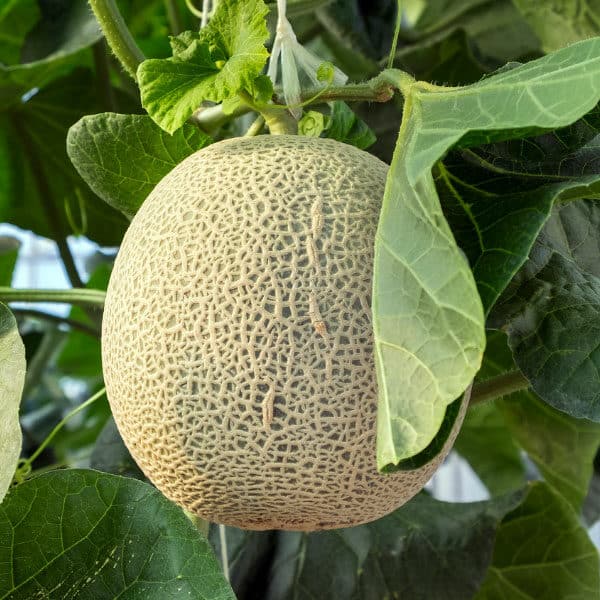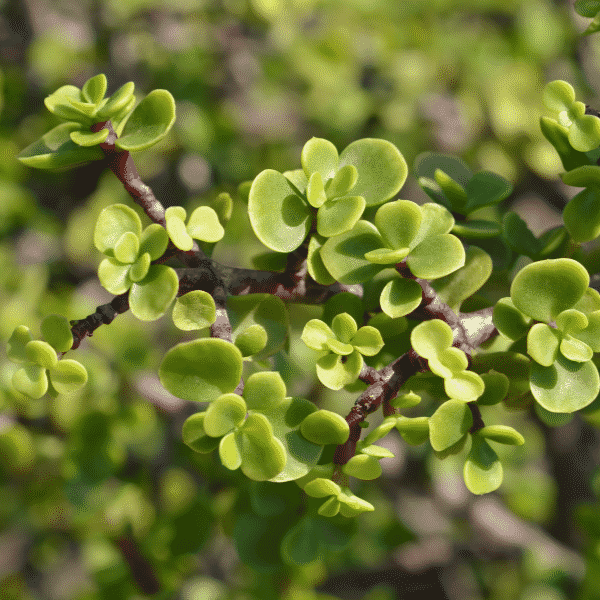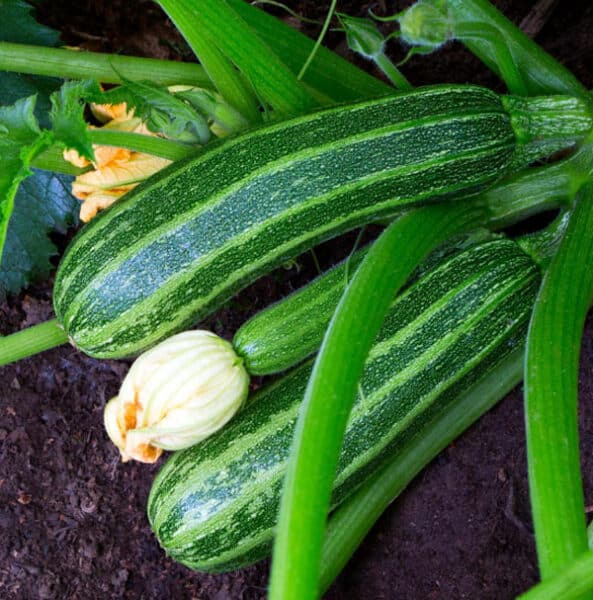This post may include affiliate links.
If you make a purchase, I'll earn a small fee at no extra cost to you.
Make the best seed starting mix with this easy DIY recipe. This natural mixture has only 3 ingredients and will get your seeds off to a great start!
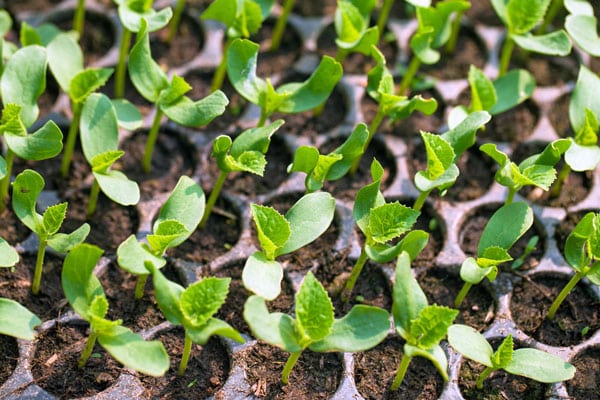
Who else likes to start plants from seed? I’ve been growing from seed for years, and every year my favorite seed companies tempt me with delicious and unique vegetables for my garden. Growing from seed is easy, and so much cheaper than buying seedlings from the local garden center.
It’s important to use seed starting mix when sprouting seeds indoors, whether you’re growing vegetables or flowers. This lightweight, aerated growing medium gives the tiny seedlings access to water and air, and gets them off to their best start.
If you’ve ever tried to sow seeds directly in garden soil, you know that it doesn’t always work. Garden soil is heavy and could be full of weed seeds, fungus, pathogens, or bugs. It’s hard for seeds to germinate and survive under these conditions.
~~~~~~~~~~~~
Are you a brand new gardener? Not sure what to plant and how to plant it? I can help.
Check out my Ultimate Beginning Gardener Bundle and you’ll have a great garden in no time!
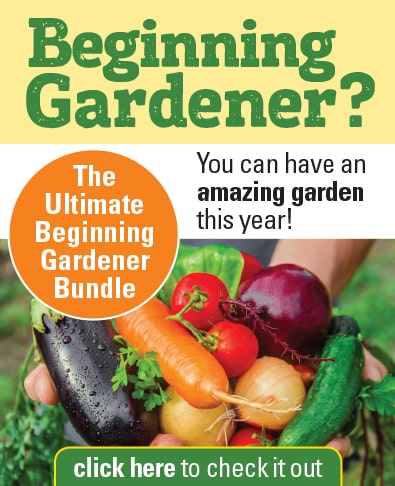
~~~~~~~~~~~~
Seed starting mix can be expensive, though. The last time I checked the price at our local garden center, it was more than $10 a bag for organic seed starting soil, and almost the same for conventional. If you’re a seed-starting nut like me, you’ll need several bags–which can get costly.
Thankfully, it’s easy to make your own seed starting mix for vegetables, herbs, and flowers. Also called seed starting soil, growing medium, or soilless seed blend, this mixture doesn’t contain soil at all! Instead, it uses a combination of three natural materials with good moisture retention, drainage, and aeration to help you grow healthy plants.
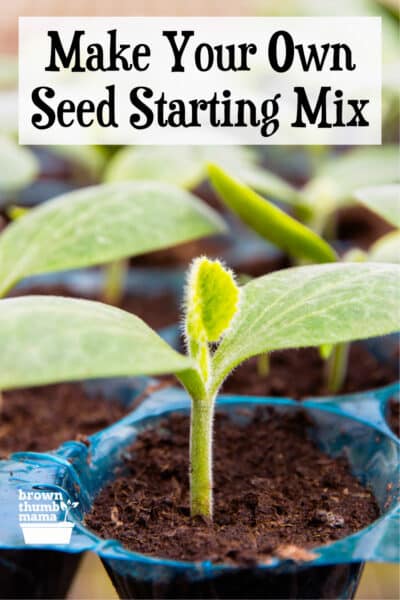
Seed Starting Mix Ingredients
Your local garden center probably has several kinds of seed starter mixes. Some are organic, some are conventional; some have added fertilizers or compost (these added ingredients aren’t needed for seed starting, though).
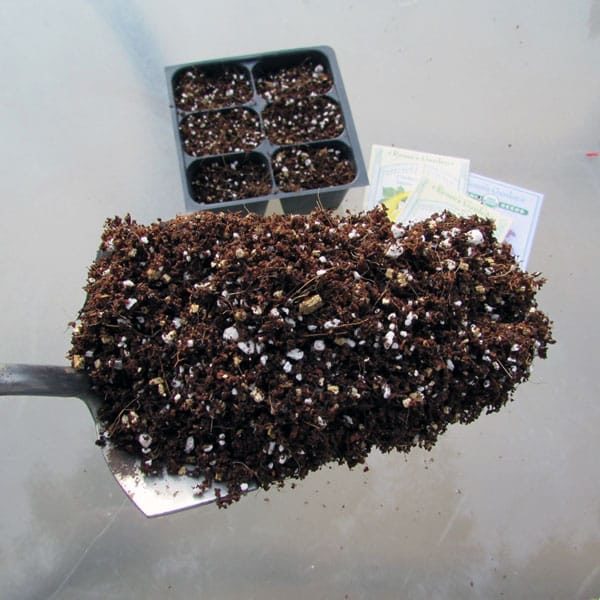
The best seed starting mix has just 3 ingredients, which are all available at your local nursery or online. Let’s check them out:
Coconut coir or coco coir, which is ground coconut fiber. It’s a sustainable byproduct of coconut processing, and it comes in a compressed brick. Look for a brand that’s marked “low salt content” or “washed to remove salts”.
Vermiculite, which is a silicate mineral that expands when heated. Vermiculite provides moisture retention, keeping the soil evenly moist.
Perlite, which is a specific kind of volcanic glass (really!). If you’ve seen packaged soil, you’ve seen perlite–it’s the little white things that look like styrofoam. Perlite improves soil aeration, giving your baby seedlings and their tiny roots room to grow.
Some DIY seed starting mix recipes use sphagnum peat moss, which is made of partially decomposed sphagnum moss, microbes, plants, animals, and insects. While this is an excellent soil amendment, it takes centuries to form and is not a renewable resource. I recommend using coconut coir instead.
Note: seed starting mix is different from potting mix or potting soil. Potting soil mix is often coarse in texture and contains ingredients like compost and worm castings that provide nutrients to growing plants. Seed starter mix has a very fine texture without added nutrients (because the seeds contain all the nutrients they need to get started).
Make Seed Starter Mix
Mixing up DIY seed starter mix is really easy. First, you need to rehydrate the brick of coconut coir. Place it in a bowl or large pan (I used an old roasting pan) and pour water over it, allowing the water to soak in.
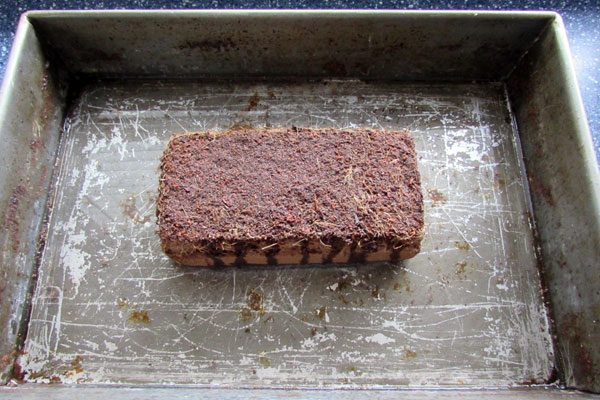
As the coconut coir absorbs water, it will expand and break apart.
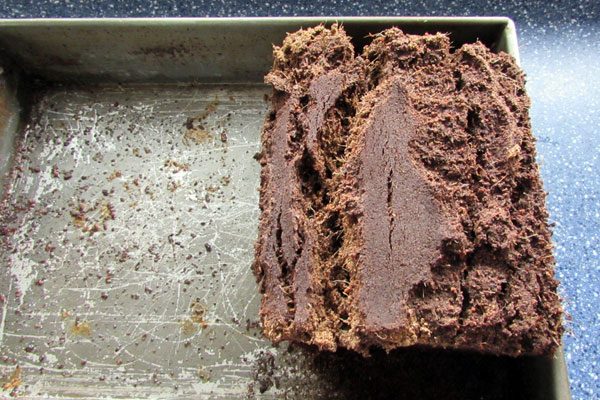
Keep adding water and breaking it apart with your hands until the loaf is fully hydrated. See that light brown piece in my hand? It needs more water before it will expand and be ready to use.
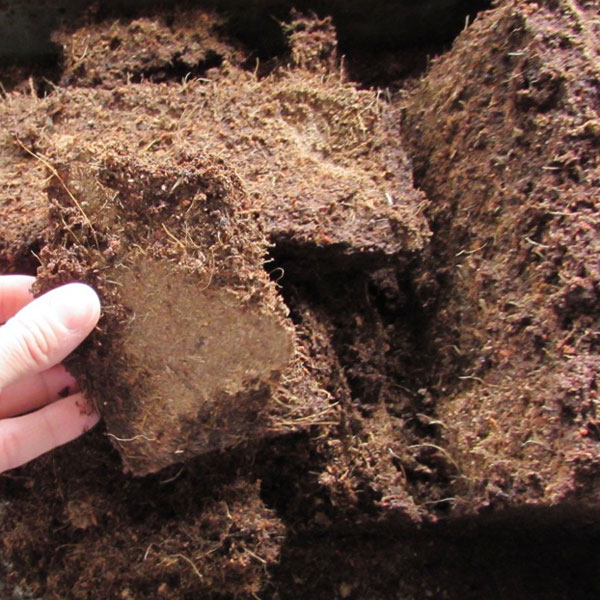
Your coconut coir is ready when it is moist but not dripping wet, and evenly dark brown with no clumps. My brick of coconut coir needed 10 cups of water, and it expanded into 30 cups after it was fully hydrated!
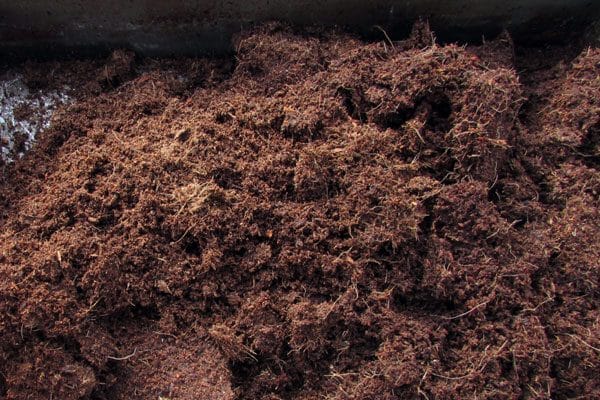
Now you’re ready to make seed starting mix.
In a large bowl, bucket, or wheelbarrow, combine:
8 cups hydrated coconut coir
1 cup vermiculite
1 cup perlite
Mix together with your hands or a spoon, and store in a covered container (a 5 gallon bucket from the hardware store is perfect). That’s all you need to do–it’s ready to go into your seedling trays. Store any excess in a covered container, in a cool and dry place.
FAQs
Will seeds germinate without seed starting mix?
Yes, you can grow vegetables from seed without using seed starting mix. However, there is a good chance that the seeds won’t sprout or thrive. Garden soil is dense and compact, and it doesn’t provide the tiny air pockets and water retention that seeds need to grow. You’ll have better germination and healthier plants if you use seed mix.
Can you reuse seed starter mix each year?
If you’re asking whether you can keep this year’s leftover seed starting mix for next year–yes, absolutely. Store it in a covered container, in a cool and dry place.
If you’re thinking of saving the mix you’re actively using this year with your seedlings…please don’t. When you take the seedlings out of the seed starting tray or pot, plant them with the seed starting soil intact and attached to the roots. This protects the roots and lets the seed mix integrate with the garden soil or potting soil.
Does seed starting mix spoil?
No, your homemade seed starting mix won’t spoil as long as it’s kept covered, cool, and dry. If the bucket is open and the mixture gets waterlogged, it could potentially attract critters or grow fungus or mold.
What’s the difference between seed starting mix vs. peat pellets?
Both of these are designed to give seeds the right growing medium so they’ll germinate and thrive. I prefer homemade seed starter mix for several reasons: peat pellets are more expensive; they’re made with sphagnum peat moss, which is a non-renewable resource; and the pellets are covered in a fine mesh that often doesn’t break down in the garden.
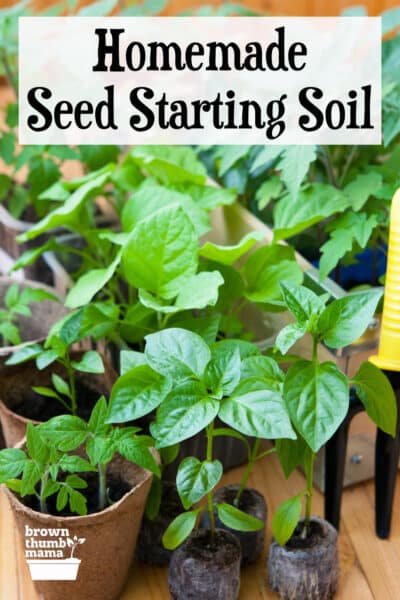
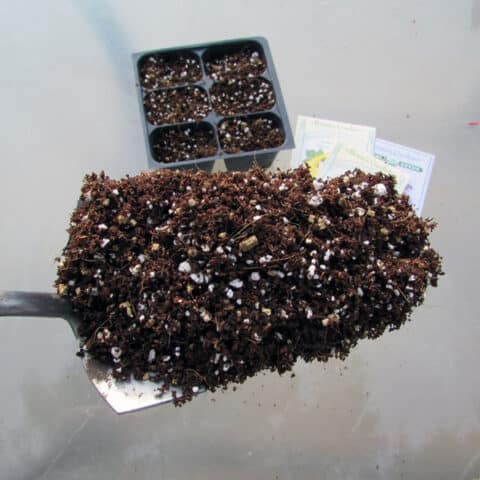
Make Your Own Seed Starting Mix
Tools
- Large bowl, bucket, or wheelbarrow
- Hand trowel or large spoon
Instructions
Mix all ingredients together with a hand trowel or spoon, and store in a covered container (a 5 gallon bucket from the hardware store is perfect). It's ready to use immediately after mixing. Store any excess in a covered container, in a cool and dry place.


